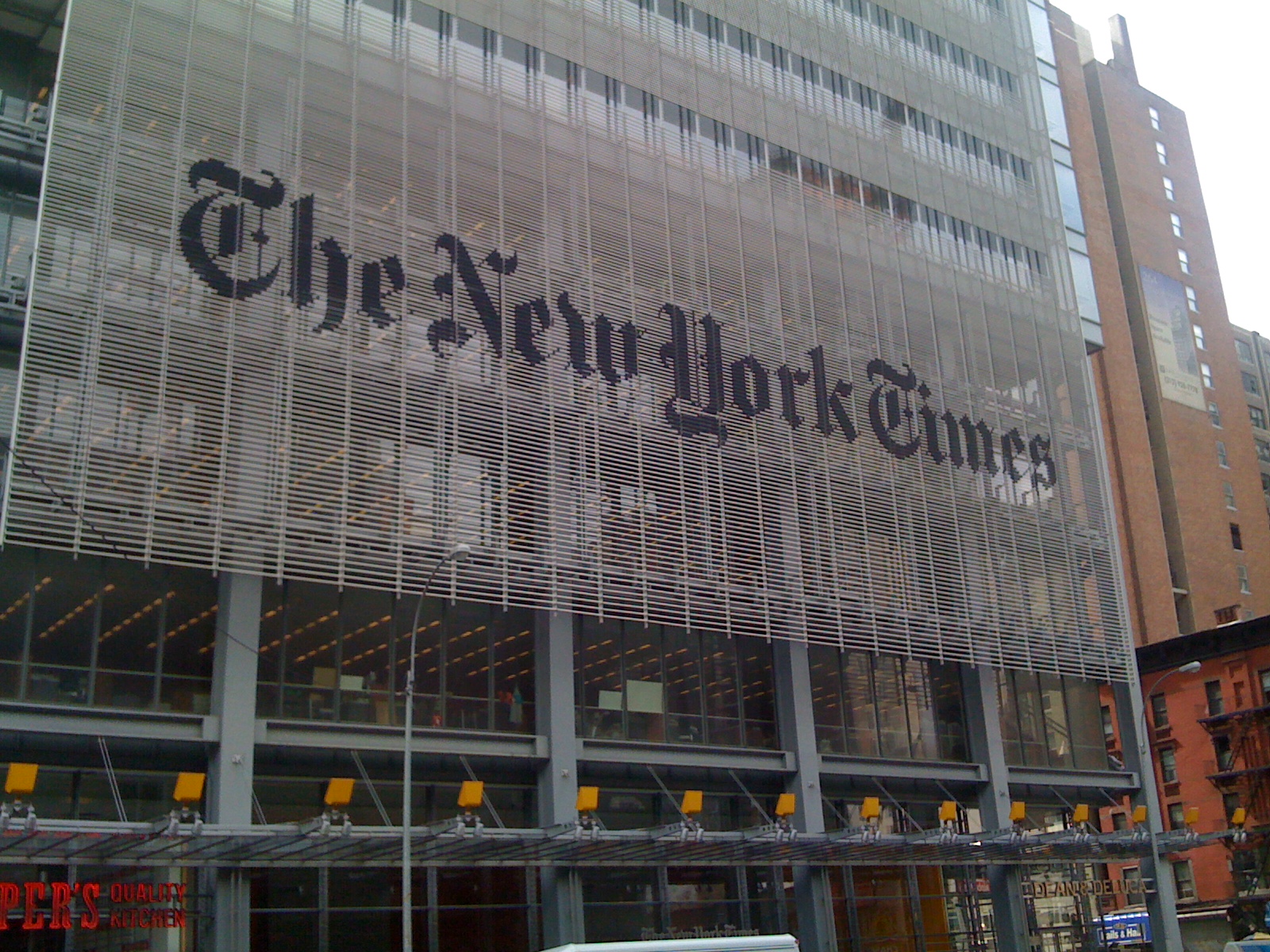Visiting The New York Times

I was very fortunate to be able to spend a week working with the Interactive News Technology Team at The New York Times June 22-26. I had met Aron Pilhofer, the editor of the group, at a couple of events in 2008, and he kindly visited our school in February for a research symposium. I also met Jacob Harris and Andrei Scheinkman on his team during SXSW. So, I was fascinated to learn more about the people behind such great interactives as the WordTrain, Rent or Buy, Living with Less, Run Well, and most recently, the New York City Homicide Map.
The department consists of ten employees with titles like Software Engineer, Interface Engineer and Interface Architect, although most of them defined their roles much more broadly than their titles indicated. Their backgrounds are varied, but they all have some combination of technical and journalism interest. Some have developer backgrounds, but have taken an interest in the storytelling aspects of journalism through data. Others are journalists in their training and experience, but have evolved on their own to the more technical aspects of Web development. Pilhofer has assembled a strong team that is uniquely qualified to do the work at hand. The team interfaces closely with Web Producers, Visual Designers and Graphics departments in developing the interactives. The process, from inception to completion is somewhat different each time, allowing for a great deal of customization. I was impressed by the level of detail and ownership each member takes for his assigned projects.
All the members of Pilhofer’s team are male. This is of particular interest to me, and diversity was addressed as a concern by each of the people I interviewed. The problem is in the pool of candidates that demonstrate this unique combination of skills. I feel we have an opportunity and a responsibility as journalism educators to see that our students get exposed to this aspect of storytelling, so that they might be driven to this type of role, or that they will be able to function on a digital team in which the presentation of data is a significant part of the story. I have had many female students that would respond well to this type of a position, given the appropriate introduction, context and training.
Some of the projects are individual interactives, like those mentioned above. Others are tools, like PUFFY, an image editor that allows users to upload photos and staffers to moderate the contributions, or Document Viewer, a tool that allows for easy viewing of large sets of documents, like Hillary Clinton’s schedule as First Lady. The team, in conjunction with ProPublica, was recently awarded a Knight News Challenge Grant for DocumentCloud, an open source project that will allow for the sharing of public source documents. Basically, they’re where the action is in journalism right now.
I also got to meet with Nick Bilton, of the Research & Development Lab and Andrew DeVigal of the Multimedia department. While I was there, I got to attend a presentation that DeVigal and his team, in collaboration with other groups, did for the award-winning project Choosing a President. I spent some time with Jim Roberts, editor of digital news, as well, and gained a good sense of the direction and leadership of the digital side of NY Times.
It was a fascinating week, and I learned a great deal. I have hours of audio interviews that I will sift through to determine themes and provide a general understanding of the processes of this elite group. I know that it is a competency that other organizations will be desperate to develop in the near future. I want to thank everyone I met at The New York Times last week for their kindness and hospitality. I was given access to most meetings and activities, and I sincerely appreciate this golden opportunity. Lots more to come on this.
For more information on the Interactive News Technology team and other departments in which it interfaces, see this NY Magazine article, “The New Journalism: Goosing the Gray Lady.”